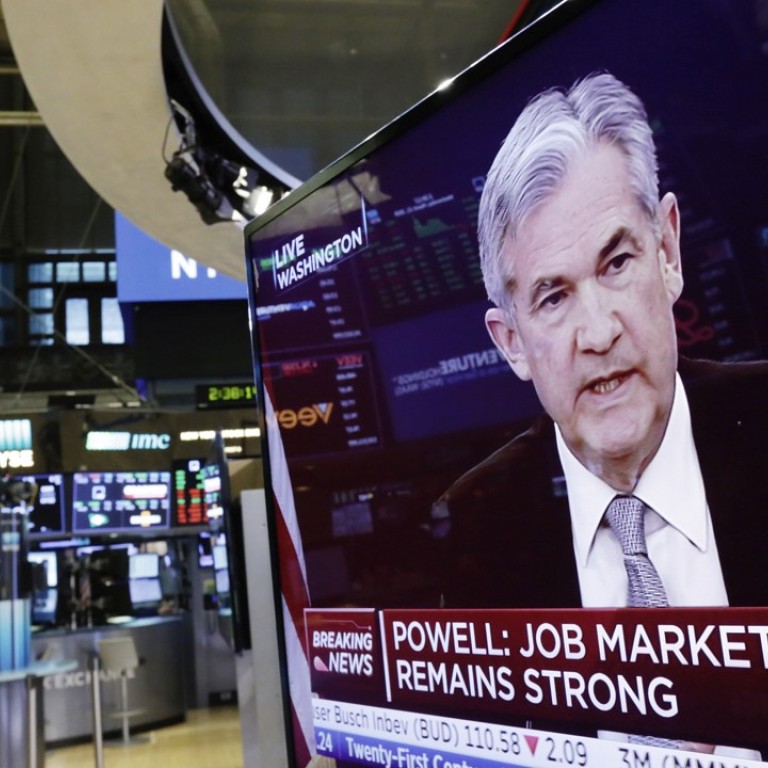
Emerging market stocks are still cheap compared to Wall Street
Following a protracted bear market, the forward price-earnings ratio of emerging market shares currently stands at 12.4 compared with 17.4 for US stocks
The bear case for emerging markets is getting stronger.
Since financial markets turned more volatile at the end of January, several factors have conspired to dim the outlook for developing economies.
Firstly, international investors’ enthusiasm for so-called “risk assets” has waned somewhat following last month’s bout of turbulence. Concerns about an increase in inflationary pressures, the trigger for last month’s sell-off, have increased markets’ sensitivity to the withdrawal of monetary stimulus, especially the risk that the US Federal Reserve will tighten policy more aggressively. On Wednesday, Jerome Powell, the new Fed chairman, projected a faster pace of interest rate hikes in the coming years.
Corporate bond markets, a key gauge of investors’ appetite for risky assets, have suffered persistent outflows over the last three months, with yields on investment grade corporate debt now at their highest level since 2012, according to Bloomberg. Emerging market debt funds themselves are suffering withdrawals, with redemptions in four of the last six weeks, according to data from JPMorgan.
Secondly, the escalation of global trade tensions following the recent decision by US President Donald Trump to impose tariffs on steel and aluminium imports poses a severe threat to developing economies. Plans by the Trump administration – now dominated by trade hawks – to move beyond sector-specific sanctions by targeting China could endanger the whole of emerging Asia’s hi-tech exports given the highly integrated nature of supply chains within the region.
The more uncertain financial and economic environment is calling into question the sustainability of the rally in emerging markets.

While the MSCI Emerging Markets Index, a leading gauge of stocks in developing economies, underwent a correction (defined as a drop in share prices of at least 10 per cent from a recent high) last month, the index currently stands at its highest level since the global financial crisis, having shot up 62 per cent since the start of 2016. Meanwhile, investors have piled into the foreign exchange markets of developing nations as the US dollar has tumbled, with allocation to emerging market currencies now at its highest level since the financial crisis, according to JPMorgan.
Make no mistake, emerging markets have become more vulnerable to a major sell-off.
Still, these risks need to be put into perspective.
While emerging markets are suffering renewed outflows, flows remain firmly in positive territory so far this year. Just last week, the equity funds of developing economies enjoyed inflows of more than US$$3 billion, bringing this year’s cumulative inflows to US$41 billion (roughly two-thirds of the money poured into global stock funds), according to JPMorgan. Even emerging market bond funds have attracted more inflows this year than US equity funds.
The stock markets of developing economies, moreover, are still cheap on a relative basis following a protracted bear market. The so-called forward price-earnings ratio, a popular valuation tool, of emerging market shares currently stands at 12.4 compared with 17.4 for US stocks. Chinese equities are trading at a multiple of just over 13 compared with a dizzying 25 on the eve of the financial crisis.
More importantly, emerging markets have a passed a number of important stress tests since the crisis, not least the 2013 “taper tantrum”, showing the extent to which the asset class has matured, and instilling investor confidence in developing economies.
The underlying fundamentals of emerging markets have improved considerably – the introduction of flexible exchange regimes and the amassment of war chests of foreign reserves have reduced external vulnerabilities significantly – while the structure and investor base of developing nations’ debt has changed dramatically since the crisis-ridden 1990s.
The so-called “original sin” of emerging markets – borrowing heavily in foreign currencies – is much less prevalent as local currency-denominated bonds account for the overwhelming share of developing economies’ debt. What is more, domestic institutional investors, such as Mexican pension funds and Asian insurance companies, own most of the debt, deepening the financial markets of developing economies and reducing countries’ dependence on flighty foreign capital.
Still, the risks in emerging markets should not be underestimated.
While governments have weaned themselves off foreign currency debt, companies have become even bigger sinners. Corporate debt in emerging markets has surged since the crisis, nearly doubling between 2006 and 2015 to 110 per cent of GDP, according to the Bank for International Settlements. A large chunk of this borrowing has been in dollars, creating dangerous currency mismatches. While the recent slide in the greenback has been a boon to emerging markets, a significantly more hawkish Fed could trigger another rally.
The last major appreciation of the dollar in 2014 and 2015 proved painful for emerging markets, contributing to sharp outflows of capital. Yet even this failed to spark a full-blown crisis, partly due to the strength of the domestic investor base.
Resilience remains the watchword for emerging markets.
Nicholas Spiro is a partner at Lauressa Advisory

